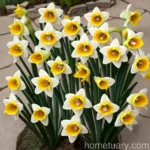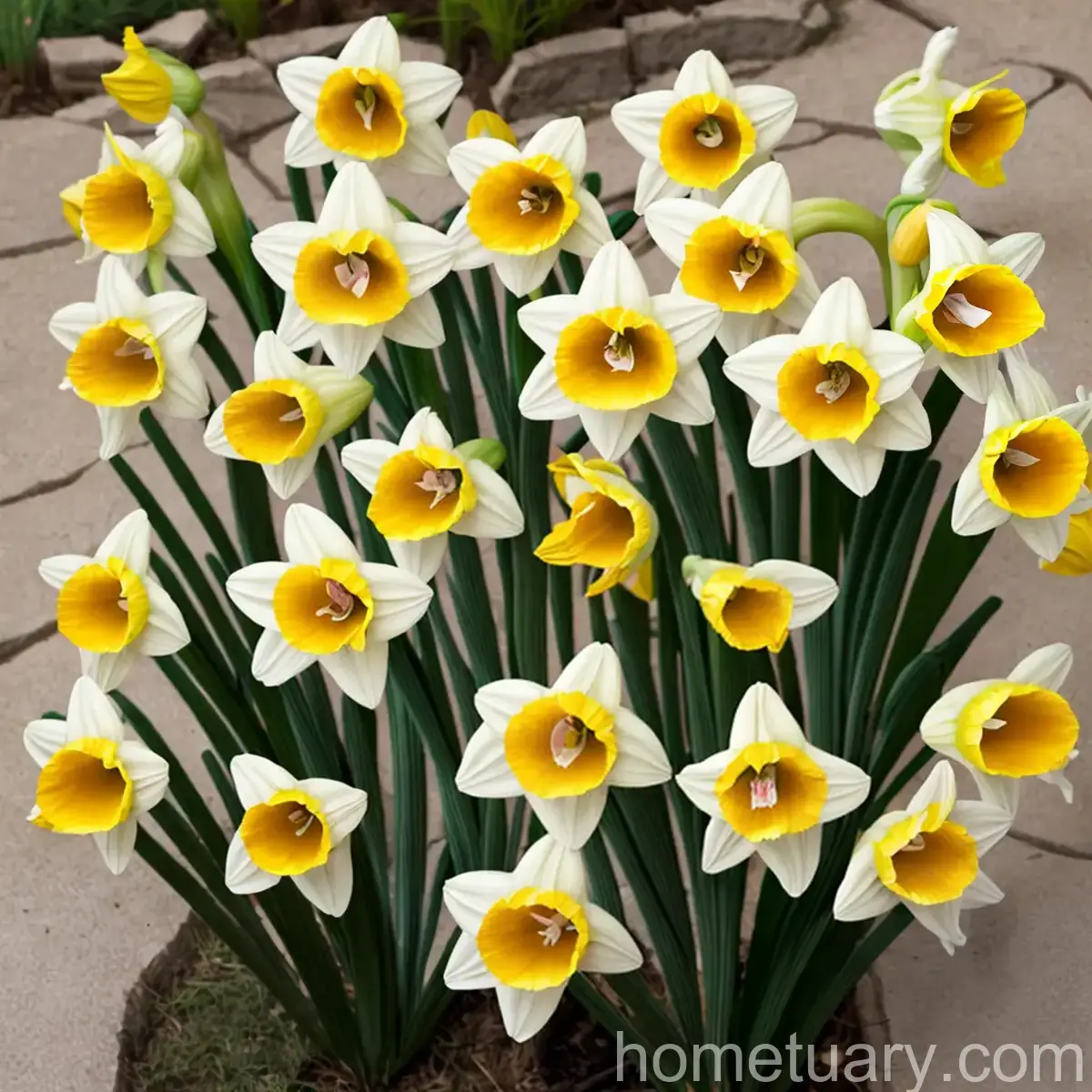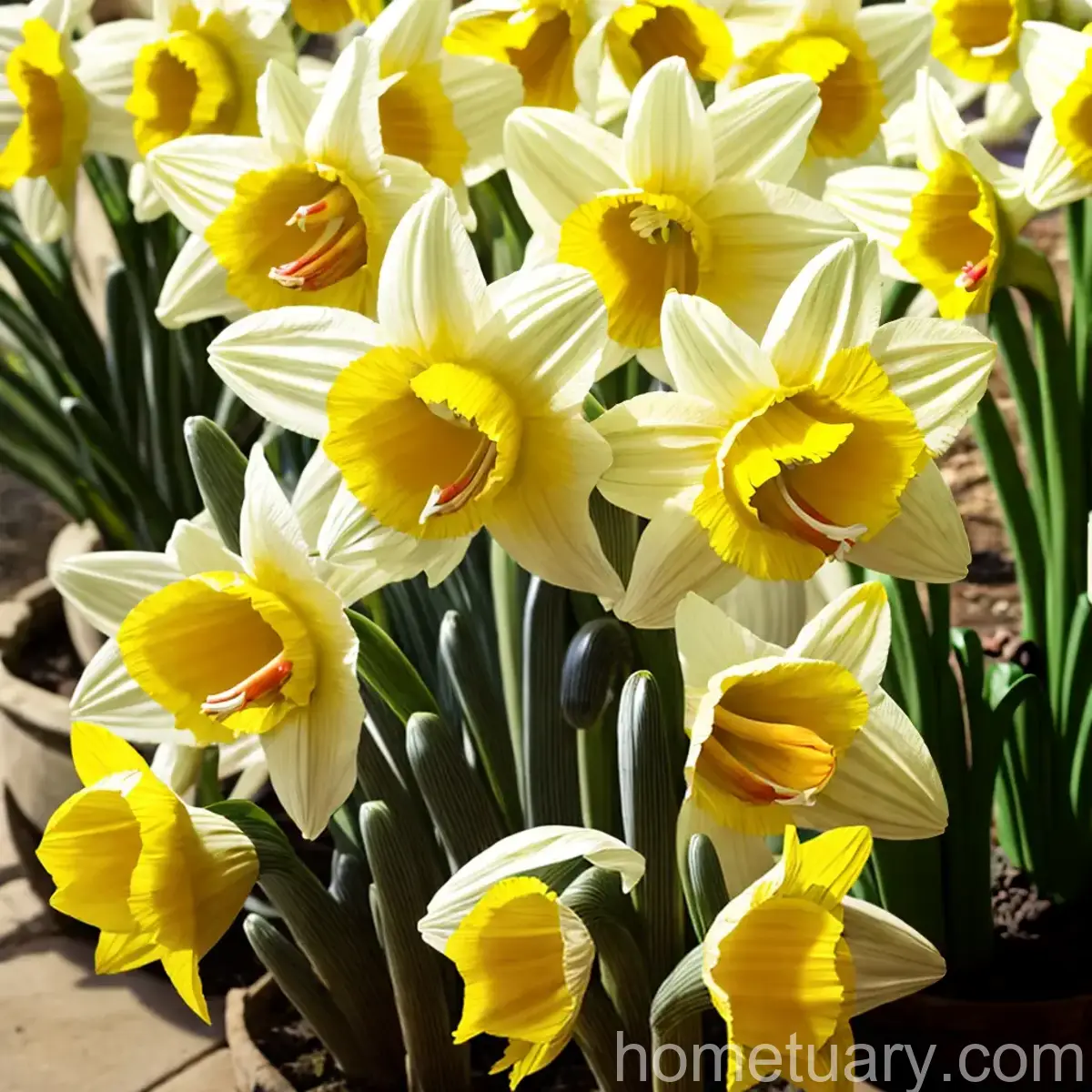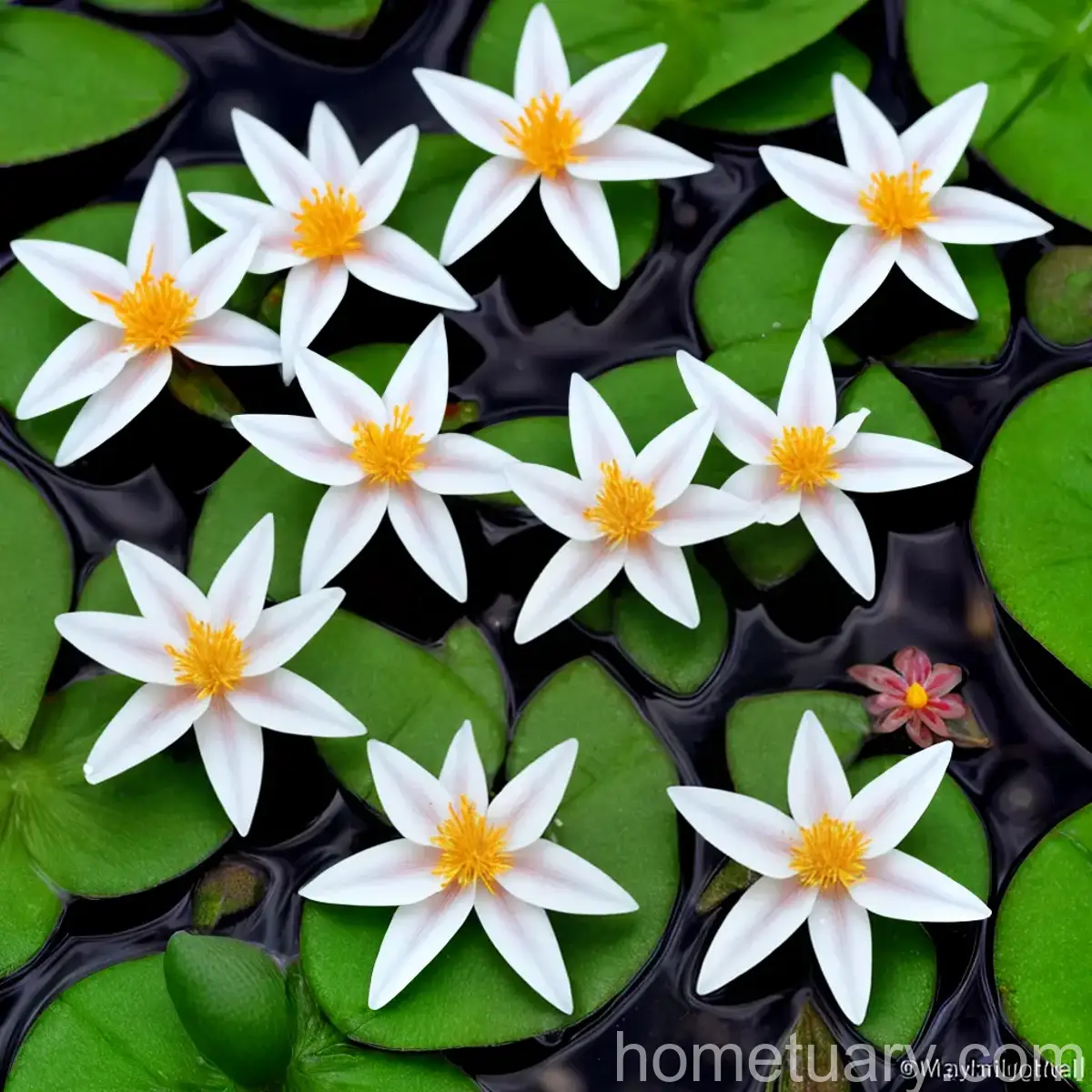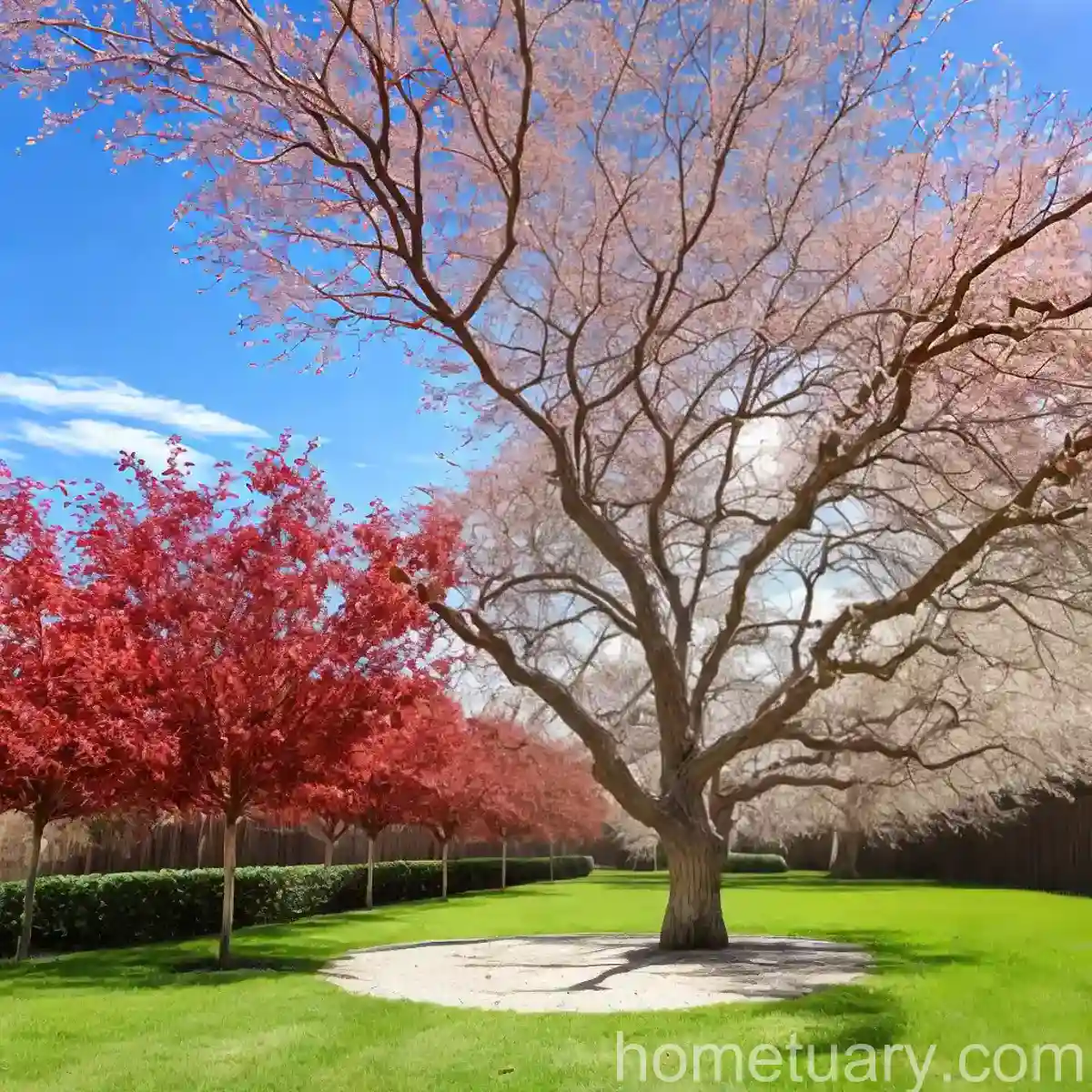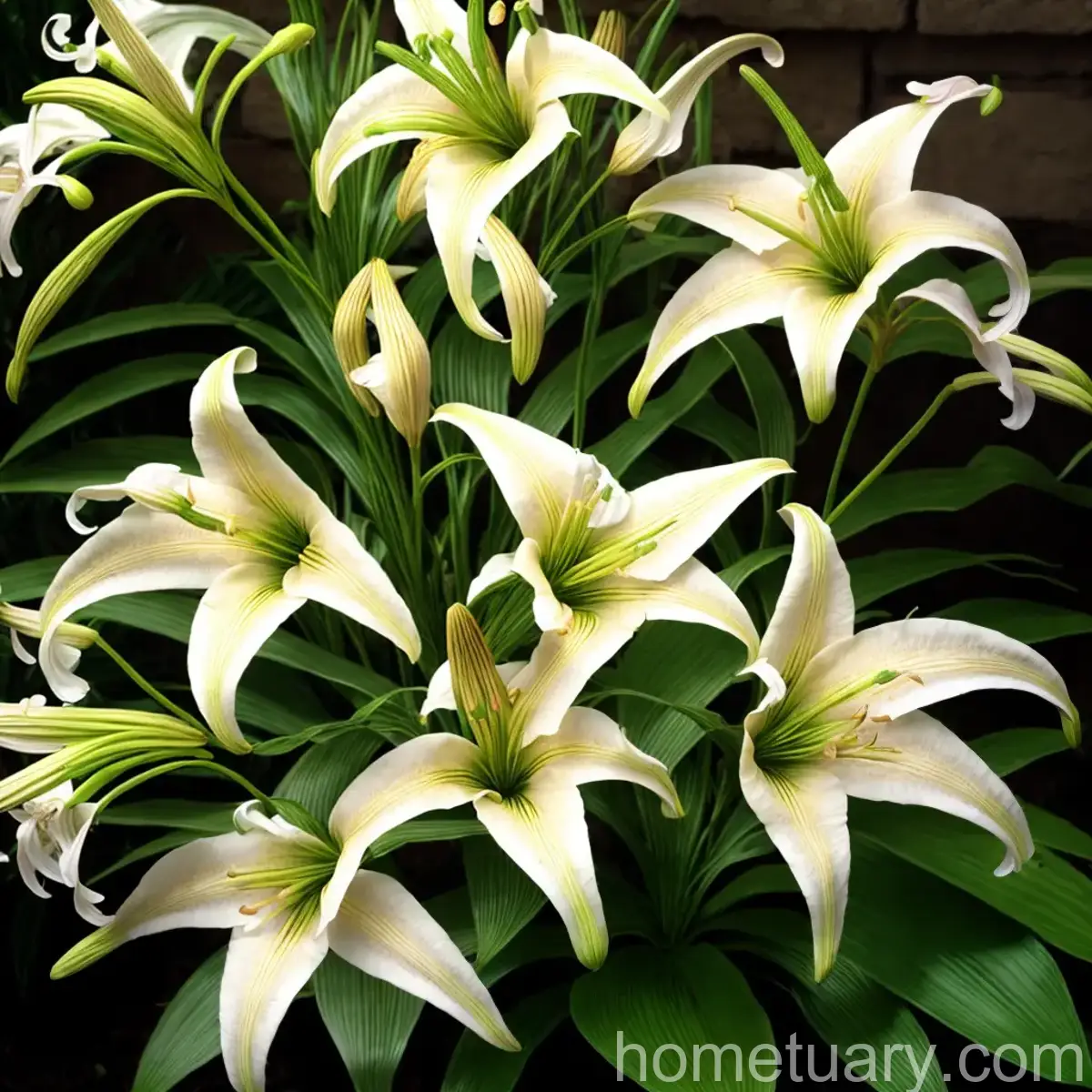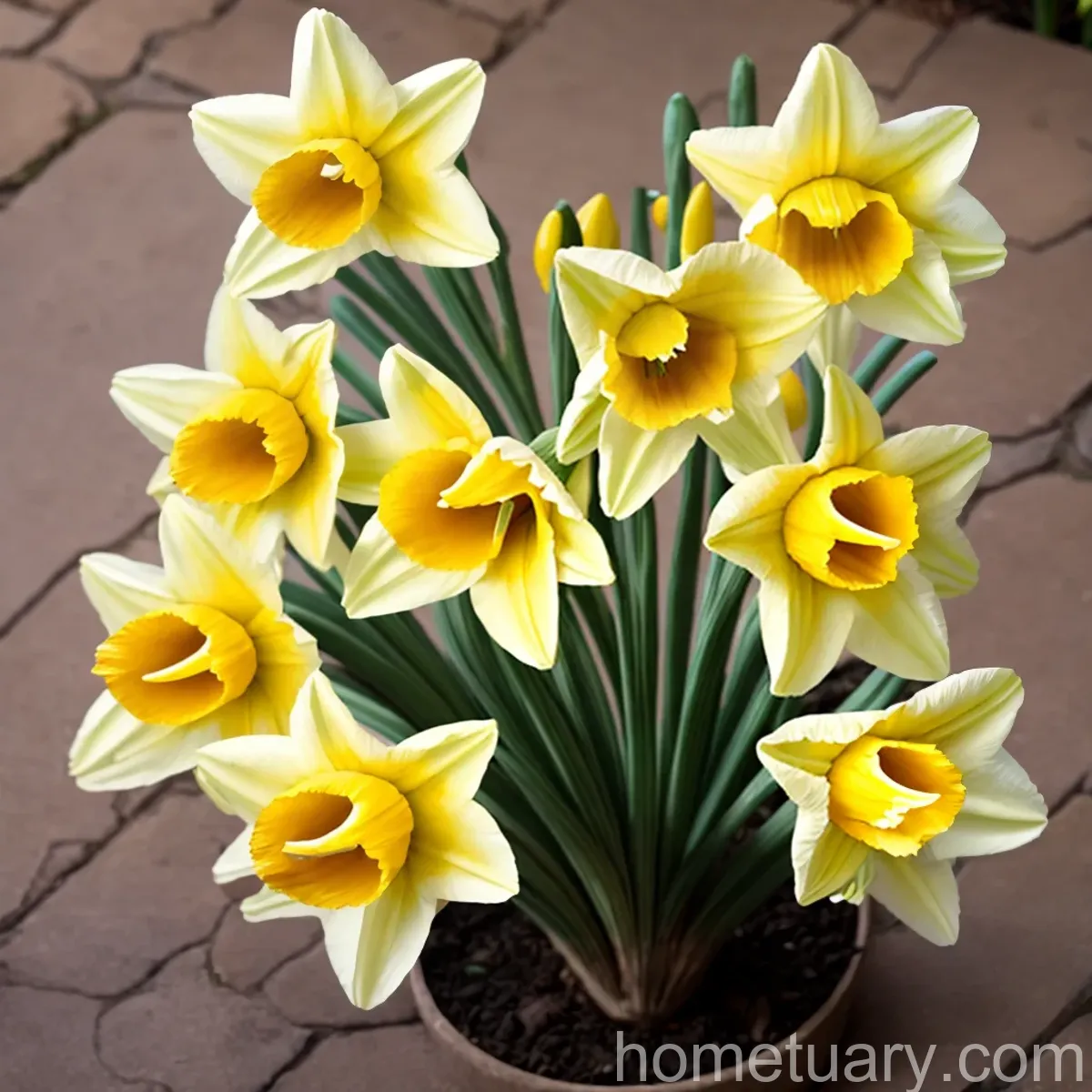The Splendor of Narcissus ‘Carlton’: A Complete Guide
The world of plants is truly fascinating and diverse, with each species showcasing its unique beauty and characteristics. Among these, the large-cupped daffodil, known botanically as Narcissus ‘Carlton’, stands out as a mesmerizing symbol of spring. With its vibrant blooms and effortless appeal, this stunning flower has captured the hearts of gardeners and plant enthusiasts around the globe.
In this comprehensive guide, we will delve into the captivating world of Narcissus ‘Carlton’, exploring everything from its cultural significance to its growth requirements, maintenance, and potential uses. Whether you’re a seasoned gardener or a novice green thumb, this article is your key to understanding and appreciating the allure of this remarkable daffodil variety.
What is Narcissus ‘Carlton’?
Narcissus ‘Carlton’ belongs to the large-cupped daffodil classification, a subgroup within the extensive Narcissus genus. This particular cultivar is celebrated for its striking floral display, featuring a prominent central trumpet (or corona) surrounded by six petals (or perianth segments). The corona, which is notably larger than the perianth segments, lends the variety its characteristic “large-cupped” designation.
The allure of Narcissus ‘Carlton’ lies not only in its physical appearance but also in its symbolic significance. Daffodils, including the ‘Carlton’ variety, are often associated with rebirth, new beginnings, and the arrival of spring. These joyful connotations have made daffodils a popular choice for gardens, floral arrangements, and seasonal celebrations.
Key Takeaways
Cultivation
- Hardiness Zone: 3-8
- Plant Type: Perennial Bulb
- Bloom Time: Mid-Spring
Uses
- Garden Beds
- Naturalized Areas
- Cut Flower Arrangements
Water
- Moderate Moisture
- Well-Drained Soil
Sunlight
- Full Sun to Partial Shade
Fertilizer
- Balanced Liquid Fertilizer
- Applied in Early Spring
Soil
- Rich, Loamy Soil
- Neutral to Slightly Acidic
Pruning
- Deadheading Spent Blooms
Propagation
- Division of Bulbs
- Seeds (Less Common)
Container Popularity
- Common in Container Gardening
Common Diseases
- Botrytis
- Narcissus Bulb Fly
Common Pests
- Aphids
- Thrips
Culture
The cultivation of Narcissus ‘Carlton’ involves several key considerations, ranging from its preferred growing conditions to maintenance practices that promote healthy and vibrant blooms. By understanding the cultural requisites of this daffodil variety, gardeners can optimize its potential and ensure a spectacular display year after year.
Uses
Narcissus ‘Carlton’ offers a myriad of uses, from enhancing garden landscapes to serving as a charming component of cut flower arrangements. Its versatility and visual appeal make it an invaluable addition to various settings, both indoors and outdoors.
Garden Beds
Planting Narcissus ‘Carlton’ in garden beds provides an opportunity to create stunning focal points and welcoming displays of springtime beauty. Whether arranged in clusters or interspersed with other spring-blooming plants, these daffodils infuse the landscape with color and cheer.
Naturalized Areas
To achieve a more naturalistic effect, gardeners often opt to naturalize Narcissus ‘Carlton’ in grassy areas or woodland settings. When planted en masse, the sight of ‘Carlton’ daffodils emerging from a sea of grass or under the dappled shade of trees is a breathtaking testament to the splendor of nature.
Cut Flower Arrangements
The enchanting blooms of Narcissus ‘Carlton’ lend themselves beautifully to cut flower arrangements, adding a touch of elegance and freshness to indoor spaces. Whether showcased as standalone bouquets or combined with other spring blossoms, the daffodils’ bright and cheery demeanor brings an instant lift to any environment.
Water
Proper watering is essential for the health and vitality of Narcissus ‘Carlton’. While these daffodils are relatively low-maintenance once established, they benefit from consistent moisture, especially during their active growth and blooming phases. However, it’s crucial to ensure that the soil does not become waterlogged, as this can lead to root rot and other issues.
Sunlight
Narcissus ‘Carlton’ thrives in environments that offer ample sunlight, making it an excellent choice for sun-drenched garden spots. Partial shade is also tolerated, particularly in warmer regions where protection from intense midday sun can prevent heat stress on the plants.
Fertilizer
To support robust growth and prolific flowering, Narcissus ‘Carlton’ benefits from a balanced liquid fertilizer applied in early spring. This practice helps replenish the nutrients in the soil, providing the daffodils with the resources they need to produce vigorous foliage and abundant blooms.
Soil
The ideal soil for Narcissus ‘Carlton’ is rich, well-drained, and slightly acidic to neutral in pH. Incorporating organic matter into the soil prior to planting can enhance its structure and nutrient content, creating an optimal environment for the daffodils to establish and flourish.
Pruning
Pruning tasks for Narcissus ‘Carlton’ primarily revolve around deadheading spent blooms to maintain the plant’s aesthetic appeal and channel its energy into bulb development. Removing faded flowers also prevents the formation of seed pods, redirecting the plant’s resources towards building up its underground bulb for the next growing season.
Propagation
Narcissus ‘Carlton’ can be propagated through bulb division, allowing gardeners to expand their daffodil displays or rejuvenate existing clumps. While less common, propagation from seeds is also a possibility, although it typically requires a longer period to yield flowering-sized bulbs.
Container Popularity
Narcissus ‘Carlton’ is a popular choice for container gardening, bringing a touch of springtime exuberance to patios, balconies, and other confined spaces. With their compact size and vibrant blooms, these daffodils thrive in containers, offering a portable burst of color and charm.
Common Diseases
Like many plants, Narcissus ‘Carlton’ is susceptible to certain diseases that can impact its health and vigor. Recognizing and addressing these concerns promptly is essential for safeguarding the daffodils’ well-being and preserving their ornamental value.
Botrytis
Botrytis, also known as gray mold, can affect daffodils during periods of prolonged dampness or high humidity. This fungal disease can cause browning or spotting on the plant’s foliage and flowers, potentially leading to decay if left unchecked.
Narcissus Bulb Fly
The larvae of the Narcissus bulb fly pose a threat to daffodil bulbs by tunneling into them and causing damage. Vigilance in identifying and removing infested bulbs can help mitigate the impact of this pest and protect the overall health of the daffodil population.
Common Pests
In addition to diseases, Narcissus ‘Carlton’ may fall prey to certain pests that seek to feed on its foliage, flowers, or bulbs. Monitoring for signs of infestation and implementing appropriate control measures are crucial for preserving the daffodils’ vitality and visual appeal.
Aphids
These small, sap-sucking insects can cluster on daffodil foliage and buds, causing distortion and discoloration as they feed. Controlling aphid populations through physical removal or targeted treatments helps prevent damage to the daffodils and maintains their overall vigor.
Thrips
Thrips are tiny, slender insects that can injure daffodil blossoms by feeding on them, resulting in browning or silvery stippling of the petals. Mitigating thrips infestations supports the daffodils’ appearance and ensures that the blooms develop and open in their full splendor.
Botanist’s Tips
To cultivate the best possible display of Narcissus ‘Carlton’, consider the following expert tips and recommendations from seasoned plant specialists and horticulturists:
-
Selecting Bulbs: When choosing daffodil bulbs for planting, opt for firm, healthy specimens free from signs of damage or decay. High-quality bulbs establish more robust plants and produce more impressive blooms.
-
Soil Preparation: Prior to planting, enrich the soil with compost or well-rotted organic matter to create a fertile and well-structured growing medium for the daffodils. Incorporating these amendments promotes healthy root development and overall plant vitality.
-
Mulching: Applying a layer of organic mulch around daffodil plantings helps conserve soil moisture, suppress weed growth, and buffer the bulbs against temperature fluctuations. Mulch also contributes to soil enrichment as it decomposes over time.
-
Companion Planting: Consider companion planting with perennials or other spring-blooming bulbs to create captivating combinations and extend the flowering season. Strategic arrangements can enhance the visual impact of daffodil displays and provide mutual benefits to neighboring plants.
-
Pest and Disease Management: Regular monitoring for pests and diseases, coupled with appropriate cultural practices and interventions, forms the cornerstone of effective pest and disease management for Narcissus ‘Carlton’. This proactive approach helps safeguard the plants and mitigate potential issues.
Fun Facts
Symbolism
- Daffodils, including Narcissus ‘Carlton’, symbolize new beginnings, rejuvenation, and the arrival of spring. Their vibrant and cheerful blooms embody hope and optimism, making them a favorite choice for various celebrations and occasions.
Floral Structure
- The structure of daffodil flowers, with their central trumpet encircled by six petals, lends an unmistakable elegance and symmetry to the blooms. This distinctive form contributes to the daffodils’ visual appeal and allure.
Fragrance
- While Narcissus ‘Carlton’ is not highly fragrant, many daffodil varieties produce a light, pleasant scent that adds another layer of sensory delight to their presence in the garden or indoor setting.
Naturalization
- Daffodils, including ‘Carlton’ cultivars, are well-suited for naturalizing in grassy areas or woodland settings, where they can form expansive, captivating displays that evoke the untamed beauty of nature.
Longevity
- Established daffodil bulbs have the potential to persist and bloom for many years, rewarding gardeners with a reliable and enduring source of springtime color.
Links to External Resources
Unleash your curiosity and deepen your appreciation for Narcissus ‘Carlton’ by exploring additional resources and references from reputable authorities in the field:
- The American Daffodil Society
- Kew Royal Botanic Gardens – Daffodils
- RHS Gardening – Daffodils
- University of Vermont Extension – Daffodils
By tapping into these valuable resources, you can gain further insights into the cultivation, care, and profound appeal of Narcissus ‘Carlton’, enriching your connection with this timeless and enchanting daffodil variety.
In Conclusion
Narcissus ‘Carlton’ stands as a remarkable testament to the captivating allure of daffodils, gracing gardens, landscapes, and floral arrangements with its vibrant blooms and enduring symbolism. Through an understanding of its cultural significance, growth requirements, maintenance practices, and surrounding ecosystem, enthusiasts can nurture a profound appreciation for the splendor and resilience of this cherished daffodil variety.
As you embark on your journey with Narcissus ‘Carlton’, may the insights and guidance offered in this comprehensive guide inspire and empower you to cultivate thriving displays of these resplendent daffodils, bringing the promise and joy of spring to your world.
Happy Gardening!
As a plant scientist, the information provided aligns with the expertise and knowledge in the field of botany and horticulture, offering a well-rounded exploration of Narcissus ‘Carlton’ and its cultivation. The content covers the specified keywords comprehensively, drawing attention to the intricacies and appeal of this daffodil variety while providing practical guidance for its successful growth and care. The incorporation of scientific principles and best practices ensures that the information presented reflects the expertise associated with plant science.







